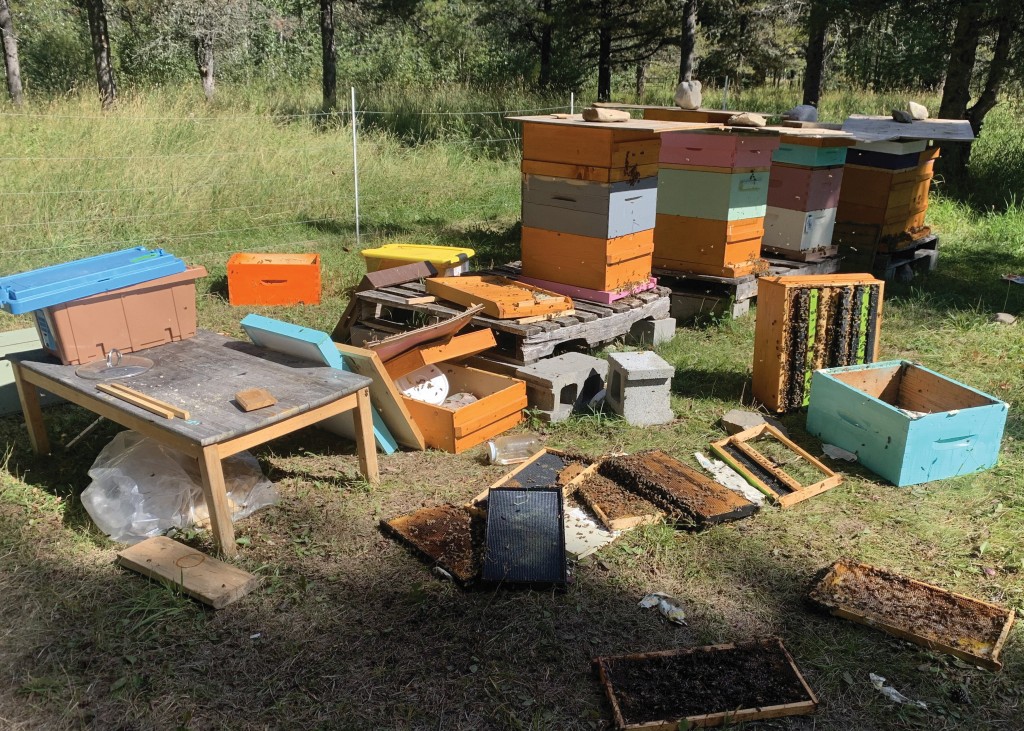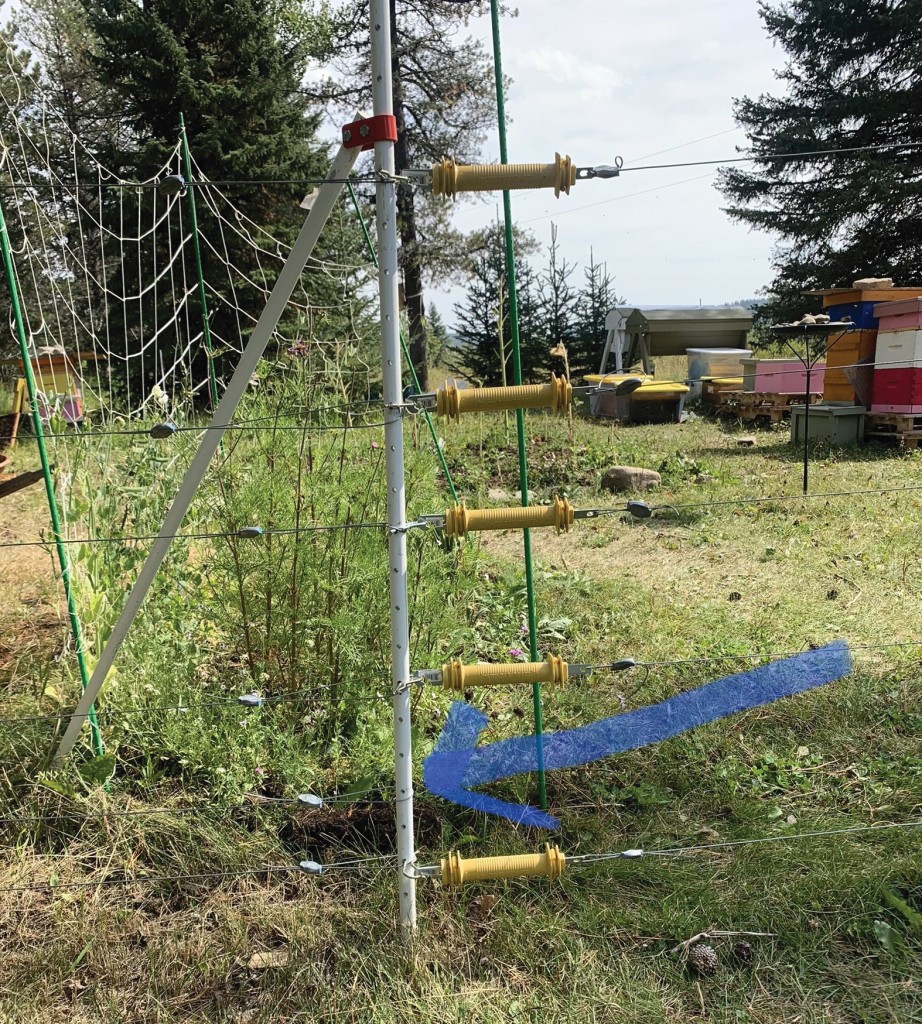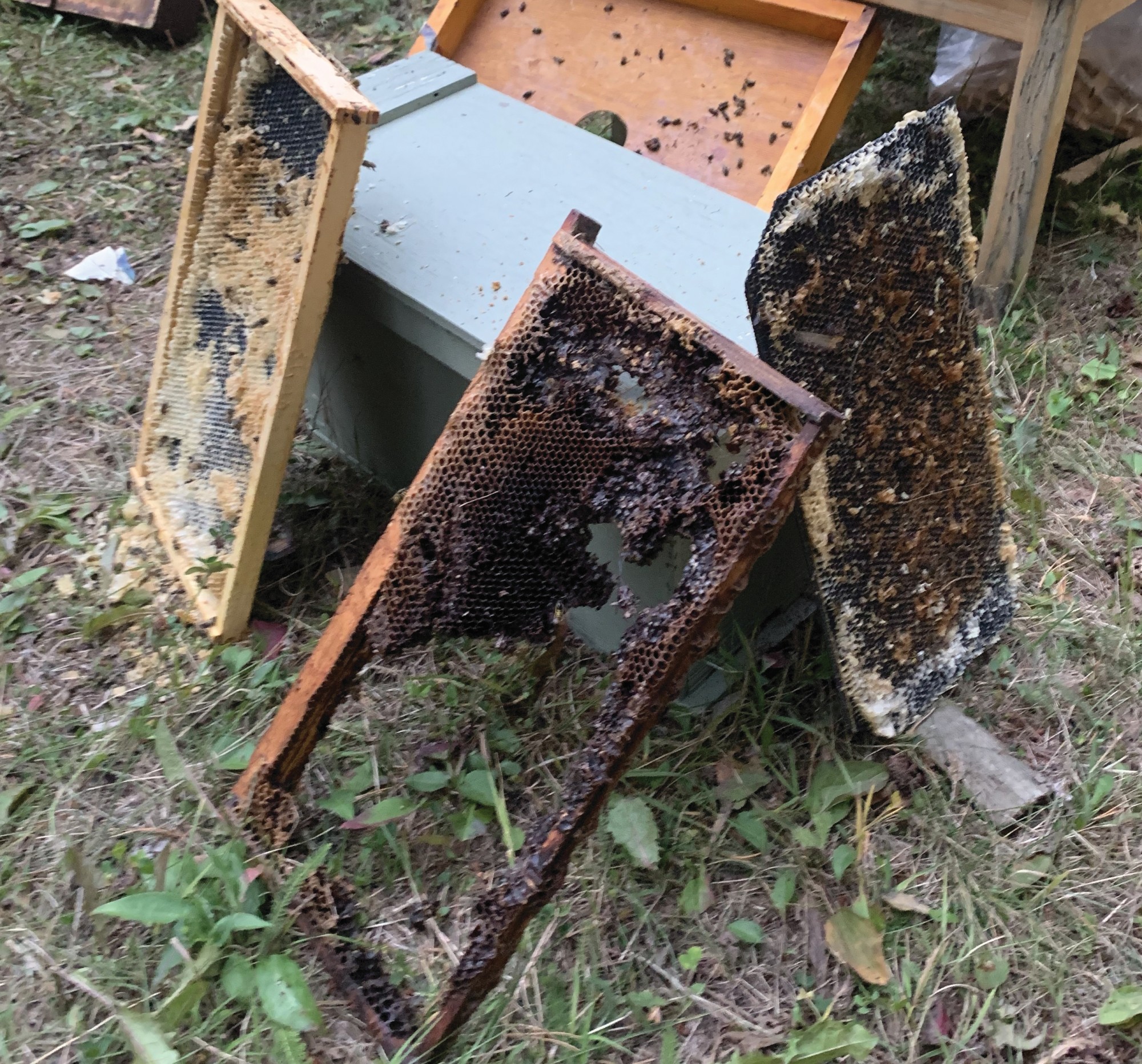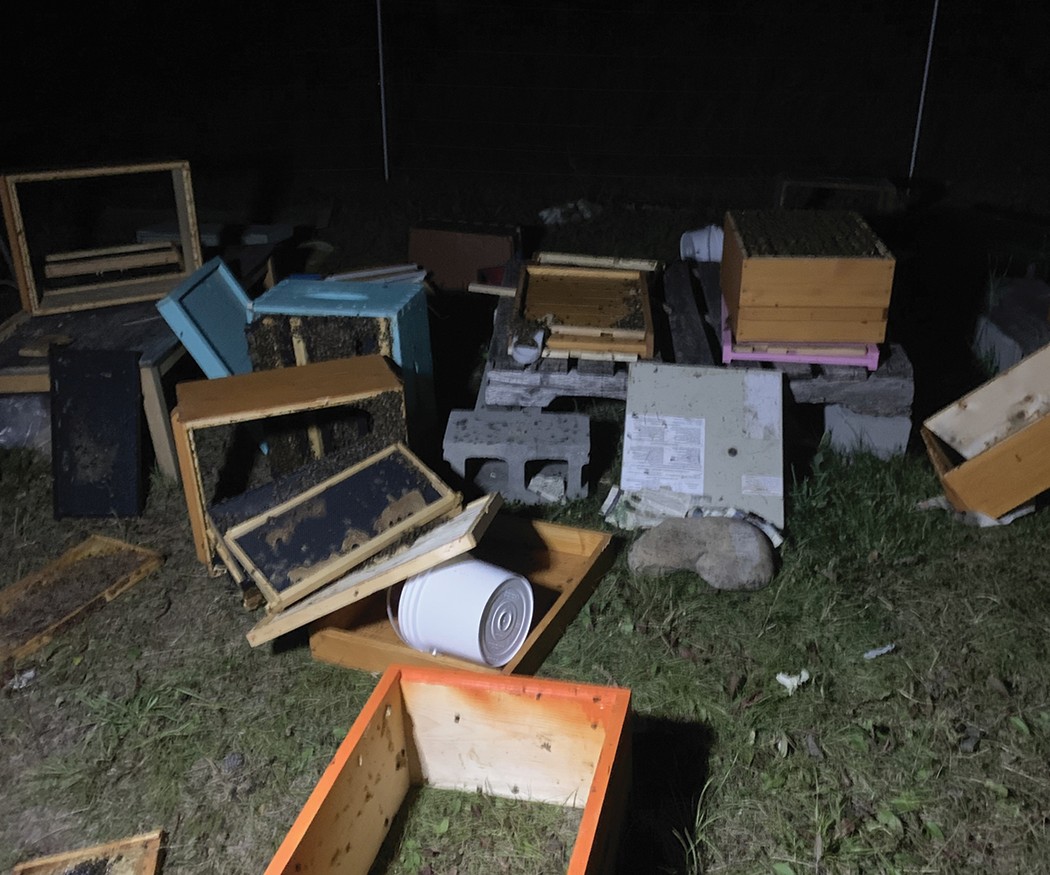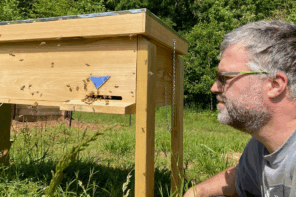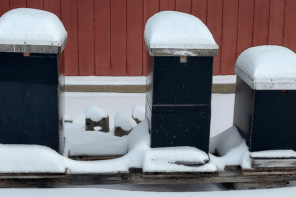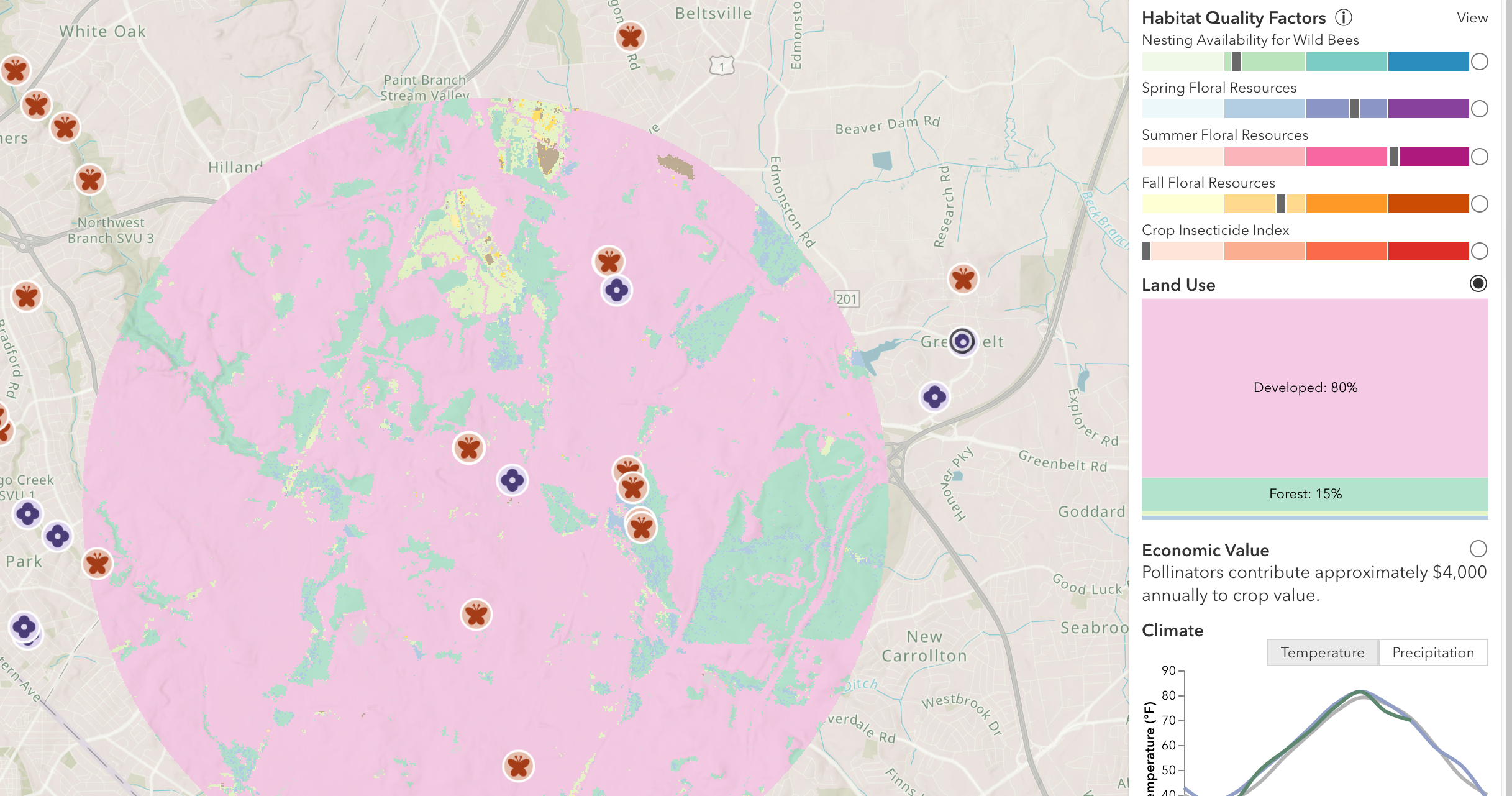Ron Miksha
Our part of the world (Calgary, Alberta, Canada) has been home to black bears and grizzlies for about ten-thousand years. In recent days, they’ve mostly resided in the zoo and probably as household pets in a few basements – though I hope not. When bears wander into town from the Rocky Mountain foothills, they are quickly trapped and moved away. Rather than joining Timmy’s dog on a canine retirement farm in upstate New York, they tend to find themselves released somewhere along the eastern slopes.
People who live in our nearby foothills, or higher up along the slopes, are in bear country. Bears might wander into a beeyard anytime from perhaps March to November, depending in the weather. One July, we had a grizzly dig under a fence at one of our higher-elevation yards, while another year, a gigantic early-August black bear was chased out of one of our locations by my brother, who yelled and chased the bear. My brother said that he made a big mistake. Don was armed with only a hive tool and ended up quite a distance from the truck when the bear stopped, turned towards him, and rose up on its back legs, over a head taller than my six-foot-tall brother. As Don tells it, the bear looked at him from just a dozen metres away, then slowly dropped back onto all fours and ambled away – without eating my brother. Lucky Don.
I just received some notes and images from a beekeeper who lives half an hour west of Calgary. Charlotte Funke has a tidy bit of land with Bed and Breakfast lodgings in Bragg Creek, Alberta. She keeps several beehives near her house. All the pictures on this web page are from her and her security cameras. One young black bear did all the damage you see here, all in one night. Although there is a well-constructed fence, she tells me that the gate to the fence was misaligned when it was latched this weekend. The hot line was grounded, and the bear entered the beeyard. You can see, in the picture, that the fence, if properly-powered, should withstand most bear visits. (The arrow shows how the gate wasn’t hooked up correctly. It was accidentally hooked to the ground wire because the cotter pin on the last live wire had fallen off.)
It’s shocking how quickly a single bear can destroy an apiary. (A married couple is twice as bad.) I’ve seen big bears lift and carry away a hive, dropping it several metres away, probably thinking it had to take its food to the dining area. The bear featured on this page sat in place, eating. This awakened the human family whose approach scared the bear into a tree. It stayed there for an hour while they cleaned up the mess. You can see some of the damaged equipment. Bears eat wood, wax, and wires to get at the brood.
Finally, a video taken by security cameras. It was dark, the bear was at a distance, but you can see the bear, ‘hiding’ behind the tree before climbing up the first night, when the damage was done. The bear came back the following night, but by then the fence had been fixed and kept the bear out. A large, hungry bear might still bust through an electrified fence, anxious to fill its belly and add body fat, as bears must do in the autumn. Hopefully, this young one has had enough trouble and will look for easier pickings elsewhere.
You can see a video of the bear’s visits at https://badbeekeepingblog.com/2021/09/08/september-bears/Sound up. I was whispering in this voice-over . . .








